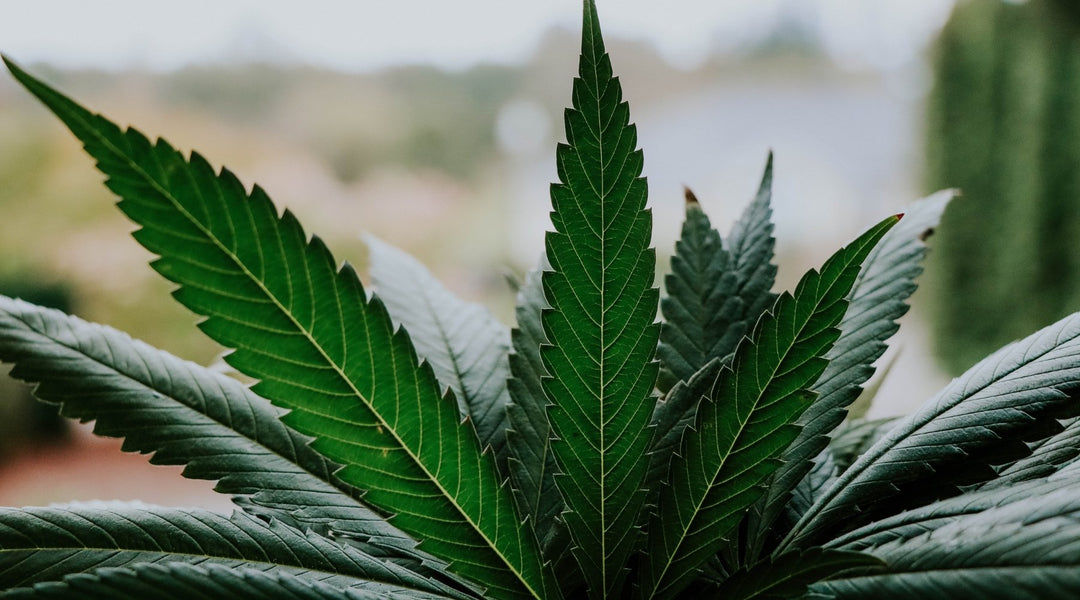Hemp for Humanity🌱Hemp Clothing Benefits

WRITTEN BY: Hemp For Humanity
10 Benefits of Hemp Clothing & Fashion
Hemp truly is a wonder plant. Widely used as an industrial crop for nearly the entirety of human domesticated history, this non-psychoactive Cannabis sativa species can be a sustainable source for producing thousands of products, from food and building materials to biofuel, bioplastics, hemp CBD oil products, and more.
But we have to ask– Did you know the hemp plant can also be used to create hemp clothing?
As we’ll explore in this article, hemp is a superior choice in fabric for clothing. Like cotton, hemp is a natural fiber. It is durable, long-lasting, and soft. But most importantly, hemp is the healthy and environmentally conscious material for everyday clothing.

The planet is in desperate need for a sustainable solution like hemp for fabric production. As it stands today, the fashion industry is the second largest polluter in the world, just behind the oil industry, and simply has a disastrous impact on the environment. The making of clothes taxes our water sources and pollutes rivers and streams, causing harm on aquatic life and the health of people living by those bodies of water.
Hemp is far from a new source for clothing. Known as the “miracle fiber,” hemp’s cellulose fibers have been used to make textiles for thousands of years. However, touting strength, durability, and softness, hemp apparel is now becoming increasingly popular as people discover its array of advantages.
This article will cover the benefits of hemp clothing and textiles, some of which include their UV-protecting properties and water-conservation advantages. We’ll also touch on why you should consider adding hemp clothes to your fashion arsenal the next time you’re looking to shop.
Is hemp the future of a sustainable fashion industry? We believe so. Here’s why:
What is the Hemp plant?

Hemp is a member of the Cannabis sativa L. species of plant that is one of the oldest domesticated crops known to man. To be considered hemp, a cannabis plant must contain no more than trace amounts of tetrahydrocannabinol (THC) per dry weight. THC is the active compound in another Cannabis sativa L. plant, marijuana, that causes euphoric effects.
Harvested for its seeds and stalk, hemp can be a renewable source for raw materials that can be incorporated into thousands of products.
For centuries, hemp has served as a source of fiber. Up until the wake of the 20th century, the potential of cannabis as a fibrous crop had been so prevalent, that even today the terms “fibrous hemp”, “industrial hemp” and “hemp” are used interchangeably.
There even were periods in history when a farmer could be prosecuted for not growing hemp. In both England and the United States, hemp was a highly sought-after crop for producing thread, ropes, and ship rigging.
Because hemp thrives under natural conditions, it is generally grown outside, with both male and female plants sown closely together to encourage wind pollination. The hemp plant has sturdy stalks and grows tall, up to 2 to 4 metres in height.
Uses of Hemp Fabric

The cellulose fibers found within the stalks of hemp can be harvested and used to make apparel and accessories for men and women of all ages and groups, including:
- T-shirts
- Hoodies
- Crewneck sweatshirts
- Dresses
- Tank Tops
- Jeans
- Leggings
- Sweaters
- Hats
- Belts
- Face masks
- Totes
- And much more!
But that’s not all. Hemp fabric can also be used to make a variety of textiles, including:
- Bedding
- Curtains
- Tablecloths and napkins
- And more
Hemp fiber on its own works well to make clothing and other textiles, and it can also be blended with other fibers, such as silk, cotton, and Tencel lyocell, to produce different qualities in the garments. More and more retailers are carrying hemp-blended clothing textiles.
#1 Hemp requires less water to grow
The fashion industry is a major water consumer. Cotton, currently the most popular fabric in the world, takes extremely high quantities of water and only produces once per growing season, making it an inefficient crop for the creation of clothing and other textiles.
Cotton is one of the most water intensive crops there is, needs up to 22,500 litres of water to produce just 1kg, putting tremendous pressure on our already scarce previous resource. Hemp, on the other hand, requires up to 4 times less water than organic cotton to produce the same amount of fabric. Plus, in some regions, hemp crops can be grown twice or more per growing season, further increasing its overall sustainability.
#2 Hemp is naturally antibacterial (antimicrobial)

Another benefit of hemp clothing and fashion? The hemp plant itself and the clothing and textiles made from its fibers are naturally anti-microbial and resistant to mold and mildew. That’s right– hemp fabrics can fight the growth and spread of bacteria!
Hemp’s well-known natural antibacterial and antimicrobial properties mean that the clothing made from it will be more likely to maintain fresh smell and feeling for a longer time.
Not to mention, because of the studies that have found that hemp can fight the growth and spread of bacteria, the plant’s fibers could be beneficial to make gowns and bedding used in hospitals.
#3 Hemp is four times stronger than cotton

Have you ever had your washing machine tear a hole in your shirt? Or have you pulled your favorite pair of pants from the dryer and found that they’re a full size smaller? Those aren’t problems you’ll have with hemp clothing!
Hemp is one of the strongest and most durable of all natural fibers on the planet, meaning hemp clothing will not show signs of wear and tear as easily and simply last longer than other items in your wardrobe. The natural cellulosic fibers found in hemp plants excel in length, so they offer greater tensile strength than other types of natural fibers.
With three times the tensile strength of cotton, hemp-made clothing holds up to repeated washings and never needs dry cleaning.
Hemp-made clothes are so durable that they are certainly not a one-season wear. This means that even if they cost a little more than their cotton-made counterparts, clothes made from hemp still make a great economical choice.
#4 Hemp clothes protects vs UV light

Adding to this is one of the most interesting and lesser-known qualities of hemp clothing – it has a high resistance to ultraviolet (UV) light, so even a thin layer of hemp fabric will keep your skin safe.
This means you can spend long hours outdoors while wearing long sleeve clothing made from this material and not have to worry about the sun’s UV rays making their way through. No matter whether dry or weight, hemp fabric touts natural sun protective qualities, shielding out 95-99% of harmful UVA and UVB rays of the sun that can damage the skin.
#5 Hemp clothes are soft & comfortable

Hemp fabric is also naturally super soft, and it will only get more comfortable as days go by. Unlike most clothing fibers, which get rough and break down over time, hemp clothing gets softer the more that it’s washed and worn.
This special offer of hemp means that repeated washes and wears will not break the fiber of hemp clothing down as quickly as clothing made from other natural fibers, like cotton.
#6 Hemp clothes retain the original colour

As much as possible, you want your clothes to stay the same colours they were when you first bought them. Hemp’s natural resistance to ultraviolet light also means that hemp fabric will not fade or disintegrate due to sunlight as quickly as other natural fibers. This also means textiles that can spend long hours in the sun, such as draperies, will hold onto their colour for much longer.
Because of the natural processing techniques that can be used on hemp fibers, hemp clothing is perfect for people with chemical sensitivities. The natural color of hemp easily accepts sustainable dyes and can also be bleached without harsh chemicals.
#7 Hemp clothes breathe well

Another great quality of hemp fiber is its excellent breathable and insulation properties. You can’t always predict how the weather will be, but hemp clothing keeps you warm and lets your skin breathe freely at the same time, something very few natural materials can do .
One may think that because hemp clothing is strong and absorbent that it would be heavy. In reality, however, hemp clothing is extremely lightweight. Hemp fabric is also porous, meaning it’s more breathable than other fabrics used to make apparel. This makes organic hemp a top choice for hemp t-shirts, pants, and other daily-wear clothing items.
The porosity of hemp fibers, while beneficial for breathability, also means that there’s no uncomfortable heftiness to clothing made from the fibers. This makes hemp clothing an excellent choice for year-around flexibility and comfort. Hemp fabrics also air-dry quickly, an important benefit for those looking to avoid the use of a dryer.
#8 Growing hemp is good for the soil

Considered an eco-friendly crop, hemp is much kinder to the Earth than cotton and other natural fibers typically used to make clothing.
While most crops deplete soil of its nutrients, hemp renews the soil with each growth cycle. And because the hemp plant has long roots, it also aerates the soil in which it’s grown while helping to prevent erosion and retain topsoil.
Finally, in some regions, hemp can be grown twice or more per growing season, further increasing its sustainability.
#9 The Hemp plant absorbs more CO2

The production of hemp is carbon negative, which means it absorbs more carbon from the atmosphere during its growth than is emitted by the equipment used to harvest, process, and transport it! This is a big deal, as a buildup of carbon dioxide (CO2) and other air pollutants are known to create the greenhouse effect, contributing to the warming of the atmosphere and climate change.
The good news? Hemp plants are better in absorbing carbon dioxide than any forest or commercial crop. According to the European Industrial Hemp Association, one hectare of industrial hemp can absorb 15 tonnes of CO2 per hectare. The plant acts as a carbon store, absorbing atmospheric CO2 for as long as the plant continues to exist.
#10 No pesticides needed for Hemp to grow

Contrary to cotton, which accounts for a significant portion of the pesticides and insecticides sprayed on the world’s crops and eventually leaked into soil and water, hemp can be grown chemical free, keeping contaminants out of the local ecosystem and out of the final hemp products.
In most of the countries where garments are manufactured, untreated toxic wastewater from textiles factories are dumped directly into nearby rivers, spreading harmful lead, mercury, aresentic, and other toxic substances into the sea and across the globe. Heavy use of pesticides also raises concern for the health of farm workers and nearby residents. Pesticides can also adversely impact the fabrics, and cause skin irritation and allergies.
Hemp doesn’t need chemical fertilizers, herbicides, or pesticides to flourish, eliminating the worry of contaminants making their way into our local ecosystems and skin irritation or allergies.
Conclusion

These reasons are more than enough to convince you how beneficial hemp clothing and fashion are. Hemp is a win-win for consumers and the environment!
Of course, nothing lasts forever. When hemp clothing and fashion is no longer wearable, they can biodegrade completely, leading to a minimal ecological footprint over the whole life of each garment.
You can be a part of this sustainability movement for yourself. Before you checkout on your next shopping trip for clothes, see if hemp-based items are available. By choosing clothing made from responsibly sourced hemp and cotton textiles, you can feel good about your environmentally-conscious decision while also experiencing the many benefits of wearing natural fibers against the skin.











Laissez un commentaire